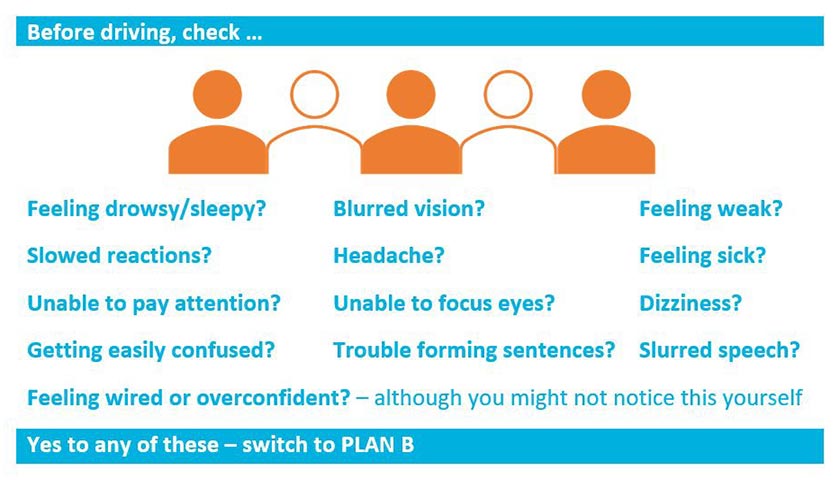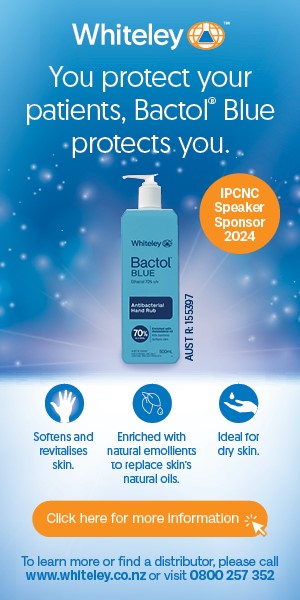
In 2019, there were 352 deaths on New Zealand roads, and 14,742 injury crashes. Forty-six percent of deaths and 15 percent of injury crashes had alcohol or drugs as a contributing factor.1
Most people think of alcohol and illicit/recreational drugs as the primary contributors to substance-impaired driving. But every year in Aotearoa/New Zealand, nine million new prescriptions are written for medications that might impair driving.2
The role of medicines in serious crashes is under-recognised: two out of every three drivers use potentially impairing medications and one in every four prescriptions is for a medication that can cause impairment.2, 3
No warning given
Waka Kotahi New Zealand Transport Agency found at least one in 13 people killed on New Zealand roads had medications in their system with the potential to impair driving. The real figure is likely to be much higher, as they only investigated a small number of medicines. Additionally, more than half of people prescribed these medications could not recall being warned about driving, and about one half of drivers are not aware it is illegal to drive while impaired by medications being used as prescribed.2, 3
Impaired driving occurs when your body or emotions have been affected (usually temporarily) in a way that makes it unsafe for you to drive. Medication-related substance-impaired driving (MR SID) involves substances, including prescription, pharmacy-only, over-the-counter and traditional remedies. Substances, whether illegal or legal, can impair the visual, cognitive and motor functions needed for safe driving. MR SID may cause slowed reaction times, fatigue, visual disturbances (such as reduced depth perception or peripheral vision), reduced vigilance, or an increase in risk-taking behaviours.
The presence of a medication does not necessarily mean the person was impaired for driving. The forthcoming drug driving bill is likely to introduce roadside testing for substances, including some medications. If a person tests positive for the presence of a medication at a checkpoint but is not showing signs of impairment, they have a medical defence under Section 8 of the Land Transport Act.4
However, if a person is warned by a health-care professional of the risk of MR SID for a medication, or there is a warning label on the medication, that person may not be covered by their insurance while driving or if in a crash while driving impaired. Health professionals should routinely have conversations with patients/clients about the risks of medication and impairment, and document them.5
Nurses and other health professionals need to understand the risks associated with prescribed (and other) medications so they can raise awareness of MR SID and advise people about safe transport choices (“Plan B”) where this risk occurs.
Self-identification of impairment, and listening to others who express concern, are key to reducing rates of MR SID. People should be advised to check for symptoms before any driving episode (see graphic) and avoid alcohol if planning to drive while taking medications that may impair driving.
For more information about MR SID, complete the free learning activity at CPD4nurses.co.nz, sponsored by Waka Kotahi. This initiative forms part of the work Waka Kotahi is doing for “Road to Zero”, the Government’s 10-year strategy6 to reduce road deaths and serious injuries by at least 40 per cent.
Georgina Casey, RN, BSc, PGDipSci, MPhil Nursing, is the director of CPD4nurses.co.nz. Craig Waterworth, RN PGCertTT, MSc, is the senior education advisor at Waka Kotahi New Zealand Transport Agency.
References
- Ministry of Transport. (2020). Annual statistics – road deaths and injuries.
- Dowden, A. (2018). Memo: Baseline SID driver survey on attitudes, knowledge and behaviour, 2017. Report prepared for New Zealand Transport Agency for the SID project. Wellington.
- Waka Kotahi–NZ Transport Agency. (2019). Medication related substance impaired driving survey: Attitude, knowledge and behaviour of New Zealand drivers 2017-2019 (PDF, 309 KB).
- Land Transport Act 1998.
- Waka Kotahi–NZ Transport Agency. (2014). Medical aspects of fitness to drive: A guide for health practitioners (PDF, 1.59 MB).
- Waka Kotahi–NZ Transport Agency. (2021). Road to zero – NZ’s road safety strategy.



